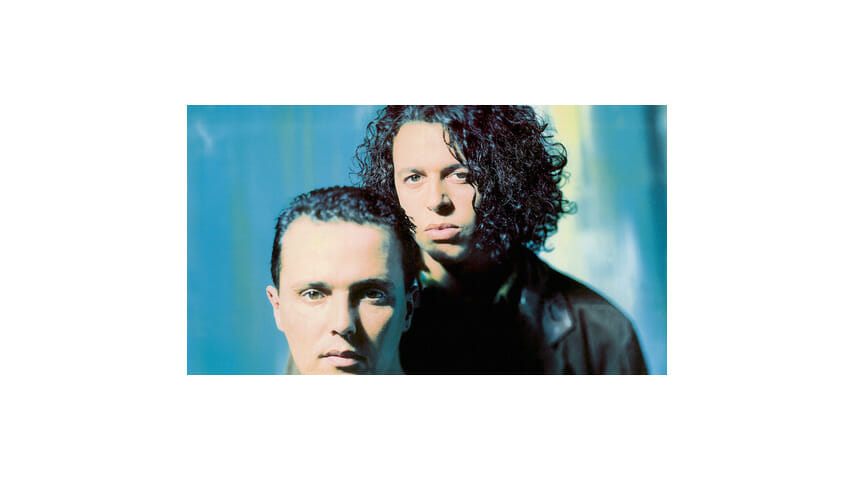Tears For Fears’ The Seeds Of Love Remains an Enticing and Challenging Listen on New Reissue
The English pop greats explored more experimental sounds on their Songs from the Big Chair follow-up, which was treated to a new deluxe edition
Photo by David Scheinmann
It’s possible, even likely, that Tears For Fears’ music has been played at every single ’80s theme night since it became popular to pay tribute to the decade of glossy pop bombast, teenage comedies and spiked hair. Their 1985 multi-platinum smash Songs from the Big Chair cemented hits like “Shout,” “Everybody Wants to Rule the World,” and “Head Over Heels” as timeless radio staples. As anyone who’s ever attended one of those theme nights can tell you, we tend to look back on the ’80s through a lens of warm affection that inadvertently lumps all the era’s aesthetics into one giant ball of kitsch—which means that Big Chair’s cavernous, reverb-coated ambience (and the accompanying cringeworthy haircuts)—will always be unfairly synonymous with that kitsch.
When co-founders Roland Orzabal and Curt Smith re-convened in 1986 to begin work on a follow-up, they did so as superstars who, in Orzabal’s words at the time “wanted to come back down to earth.” Meanwhile, they were both keen to explore a more organic approach to song construction. Like so many hitmakers of the day—Duran Duran, The Fixx, The Police, The Cars, The Cure, etc.—Tears For Fears helped cement the role of synthesizers in pop music, without diminishing the guitar. But, as integral as the synths were, the quirks in the band’s writing style also propelled its rise to the top of the charts.
On Songs from the Big Chair, those quirks were largely masked by a natural instinct for hooks shared by Orzabal and then-keyboardist Ian Stanley. With The Seeds of Love, which now gets its own “super deluxe” edition for the first time, the band scrubbed away at its polished, somewhat mechanized sheen to let the quirks take the foreground.
This transition is actually captured on opening track “Woman in Chains,” which at first appears to head down the same electro-pop path as before. It begins with electronic drums clapping against a bass figure that mimics a loop. The drums’ echo feels contained, artificial and cold. When flute-like keyboard lines, rippling guitar chords and various shades of hand percussion all emerge in succession, it’s like watching time-lapse footage of flower buds gradually emerge from soil—living, breathing sounds taking over a barren space like vines. The change, though subtle, marks the first of many indications that Tears For Fears were once again about to significantly expand their sound, much in the same way that Big Chair marked a decisive leap from the band’s 1983 debut The Hurting.
“Woman in Chains,” an unlikely top-40 hit, is followed by “Badman’s Song,” the album’s most epic track and arguably its centerpiece. It’s a jammy gospel-tinged jazz-pop hybrid that’s crammed with more dynamic peaks and valleys than the band had ever attempted prior. The product of Orzabal’s jam sessions with a crack group of A-list session players, including drummer Manu Katché and bassist Pino Palladino, “Badman’s Song” documents Tears For Fears swelling into something resembling a big band. There are stretches where it seems like all the musicians on “Badman’s Song” all blare at once, each playing the busiest parts they could imagine. That said, the tune stands out most for its poise. Orzabal leads as if piloting a powerful airplane, cutting the engine to perform breathtaking maneuvers where the vehicle appears weightless. In new, detail-crammed liner notes assembled as an oral history for this reissue, Orzabal looks back almost in disbelief at the audacity it took to follow a 10-million seller with this pair of songs.
-

-

-

-

-

-

-

-

-

-

-

-

-

-

-

-

-

-

-

-

-

-

-

-

-

-

-

-

-

-

-

-

-

-

-

-

-

-

-

-








































